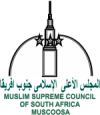Welcome to Provincial Executive Committee of Muslim Supreme Council of South Africa ( MUSCOOSA) for Kwazulu Natal province comprised of Provincial Mufti, Regional Representatives who are leaders of Municipalities and Districts that makes up Kwazulu Natal Province Called Municipal Qadhi or District Qadhi, and Town representatives.
Each town of a Municipality or District has a leader in Charge of Islam and Muslim affairs who is responsible for Council of Imams and Muadhins of that Municipality or District called Town Representatives who reports to Regional representatives called Municipal Qadhi and District Qadhi, who reports to Provincial Mufti.
The office of Provincial Mufti monitors operations of Regional Representatives called Municiplal Qadhi, District Qadhi and Town Representatives with following Structure:
- Regional Representatives are Heads of Islam Affairs in Municipalities and districts called Municipal Qadhi and Disrict Qadhi. There are representatives in every town that makes a Municipality or District those who report to Municipal Qadhi or District Qadhi.
- Municipal Qadhis and District Qadhis are Deputies of Provincial Muftis, they make part of Provincial Executive Committee headed by Mufti of the Province.
- Provincial Muftis, Municipal Qadhi and District Qadhi all form part of Council of Sheikhs ( Majlisil Ulama).
Municipal Qadhi and District Qadhi coordinate with Mayors office , all town representatives reports back to him. the management has a team of members comprised of:
- Provincial Mufti
- Regional Representatives called Municipal Qadhi and And District Qadhi
- Secretary
- Head of Imams and Muadhins in Municipality and District
- Town Representatives in charge of Council of Imams and Muadhins .
Map Showing Municipalities and Districts of Kwazulu Natal province

Overview
KwaZulu-Natal is located in the south-east of South Africa bordering the Indian Ocean. It also borders on the Eastern Cape, Free State and Mpumalanga provinces, as well as Lesotho, Swaziland and Mozambique. The ‘Garden Province’ of South Africa stretches from the lush subtropical east coast washed by the warm Indian Ocean, to the sweeping savanna in the east and the majestic Drakensberg Mountain Range in the west.
It covers an area of 94 361km², the third-smallest in the country, and has a population of 11 065 240, making it the second most populous province in South Africa. The capital is Pietermaritzburg. The largest city is Durban. Other major cities and towns include Richards Bay, Port Shepstone, Newcastle, Estcourt, Ladysmith and Richmond.
The province’s manufacturing sector is the largest in terms of contribution to GDP. Richards Bay is the centre of operations for South Africa’s aluminium industry. The Richards Bay Coal Terminal is instrumental in securing the country’s position as the second-largest exporter of steam coal in the world. The province has undergone rapid industrialisation owing to its abundant water supply and labour resources.
Agriculture is also central to the economy. The sugar cane plantations along the coastal belt are the mainstay of KwaZulu-Natal’s agriculture. The coastal belt is also a large producer of subtropical fruit, while the farmers inland concentrate on vegetable, dairy and stock farming. Another source of income is forestry in the areas around Vryheid, Eshowe, Richmond, Harding and Ngome.
KwaZulu-Natal is divided into one metropolitan municipality (eThekwini Metropolitan Municipality) and 10 district municipalities, which are further subdivided into 43 local municipalities.
